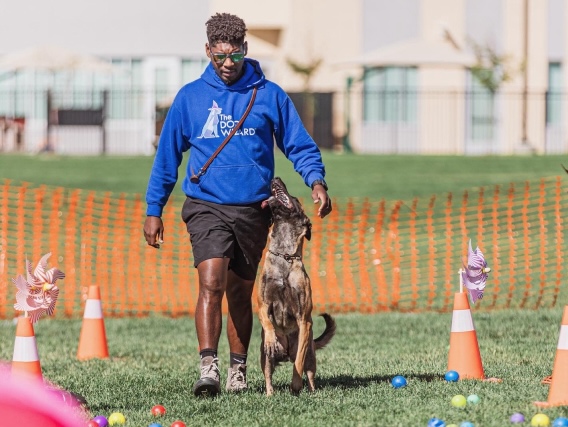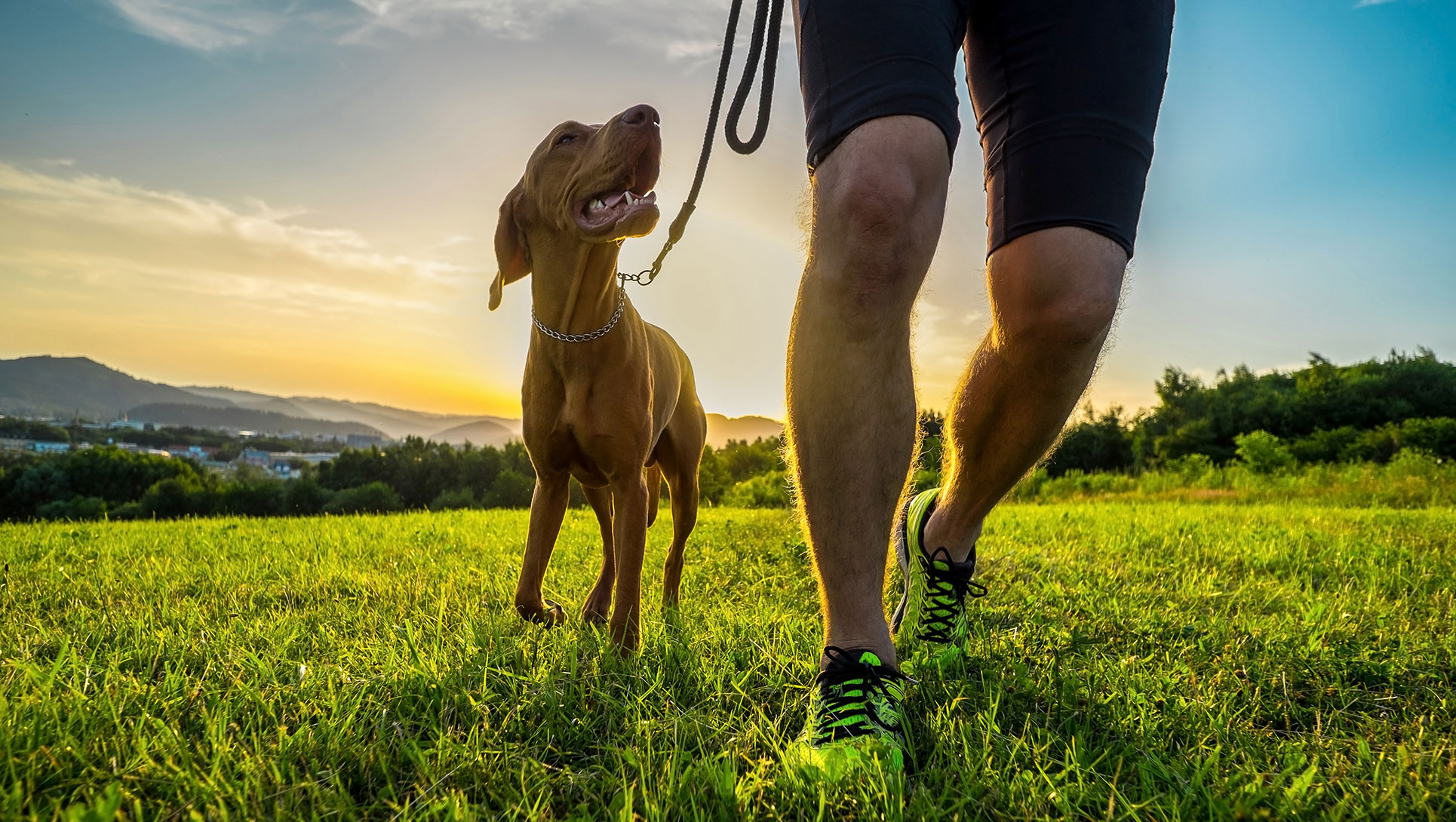Common Mistakes to Avoid During Dog Training for Better Results
Common Mistakes to Avoid During Dog Training for Better Results
Blog Article
Transform Your Pet's Habits With Proven Training Approaches
Transforming your dog's habits needs a nuanced understanding of their private characteristics and requirements, as well as the application of tested training techniques. Consistency in your training method not just improves obedience but also fosters a deeper bond of depend on and regard in between you and your animal.
Understanding Dog Actions
Comprehending canine behavior is important for efficient training and interaction in between human beings and their canine buddies. Pet dogs, as social pets, show a variety of actions influenced by genetics, environment, and experiences - Dog training. Identifying these actions aids proprietors tailor their training approaches to fulfill the specific needs of their canines
Secret aspects of pet behavior consist of body language, vocalizations, and social interactions. For example, a wagging tail often suggests exhilaration, while a reduced head may signify entry or concern. Recognizing these signals can aid owners analyze their dog's mood and react appropriately. In addition, socializing plays a crucial function in forming actions; canines that connect positively with various other animals and various individuals are usually much more well-adjusted and adaptable.
Additionally, acknowledging anxiety signals-- such as pacing, avoidance, or panting actions-- can stop rise right into extra significant concerns. Owners that are in harmony with their dog's behavior can create a secure and nurturing setting, promoting count on and improving the training process. Inevitably, a deep understanding of canine habits lays the foundation for an unified partnership and effective training end results, guaranteeing both pet dogs and their owners thrive with each other.
Positive Support Methods
Positive support techniques are widely acknowledged as one of the most efficient techniques for training pet dogs, fostering a favorable learning atmosphere. This method includes rewarding desired behaviors with treats, praise, or play, consequently encouraging the canine to repeat those behaviors. Unlike punitive approaches, favorable reinforcement constructs depend on and reinforces the bond between the trainer and the pet.
To execute favorable support efficiently, timing is important. Incentives ought to be provided right away following the preferred habits to help the dog make the link. Consistency is additionally necessary; utilizing the same commands and rewards aids the pet dog understand what is expected. In addition, varying the incentives can keep the canine engaged - Dog training. Rotating between treats, playthings, and verbal praise can maintain interest and inspiration.
It is vital to note that positive reinforcement is not concerning bribery; rather, it has to do with enhancing etiquette. Over time, as the canine learns to associate details activities with positive results, the regularity of rewards can be slowly lowered, transitioning to verbal appreciation or recurring incentives. This technique not just motivates obedience but additionally promotes a confident and delighted canine, making training an extra pleasurable experience for both events entailed.
Attending To Usual Issues
Dealing with usual problems throughout pet dog training is essential for making sure a harmonious and effective relationship between the pet and its proprietor. Many pet owners come across behavioral challenges, such as extreme barking, jumping, and leash drawing. Comprehending the origin of these habits is important for effective training.
Extreme barking may come from boredom, anxiety, or an absence of socializing. To minimize this, provide ample exercise, mental excitement, and chances for social communication with both people and other canines. Leaping can usually suggest exhilaration or a need for interest. Training the dog to sit upon greeting can redirect this behavior positively.
Chain pulling is an additional widespread problem, frequently resulting from a pet dog's passion to discover. Making use of proper chain dealing with methods, incorporated with training methods that encourage loose-leash walking, can substantially improve this behavior.
In addition, issues like resource securing or splitting up stress and anxiety require tailored approaches. Steady desensitization and counter-conditioning can be reliable in addressing these challenges. By identifying and proactively taking care of these common concerns, pet owners can cultivate an extra satisfying training experience and enhance the bond with their canine companions.
Consistency in Training

To accomplish uniformity, it is important that all members of the household follow the same training techniques. As an example, utilizing the very same spoken cues and hand signals ensures that the pet dog receives consistent messages. Furthermore, the timing of modifications and rewards should be consistent; immediate support increases the chance that the pet dog will associate the behavior with the outcome.
Moreover, establishing a regimen can further boost consistency. Normal session, coupled with structured timetables for feeding, strolling, and play, assistance read this canines prepare for and understand their atmosphere, making them more receptive to training. Inevitably, uniformity promotes a feeling of safety and depend on, empowering pets to find out more efficiently. By devoting to a structured method, fitness instructors can Our site promote favorable habits modifications and grow a well-mannered companion.
Building a Strong Bond
How can fostering a solid bond in between a pet dog and its proprietor improve the training experience? A strong partnership improved depend on and regard acts as the structure for effective training. When a pet really feels safe in its connection with its owner, it is most likely to exhibit positive actions and be responsive to learning. This bond urges the dog to engage fully in training sessions, as it sees the owner as a resource of advice and assistance.
Moreover, a solid bond facilitates far better communication. Pet dogs are experienced at checking out human hints, and a trusting partnership enables for clearer signals during training. Owners that invest time in building this bond with play, socialization, and positive support develop a setting where pet dogs feel inspired and anxious to learn.
Additionally, a well-established link can lower anxiety and behavior problems, as dogs are less most likely to act out when they really feel recognized and taken care of. Prioritizing the development of a strong bond not just enhances the training experience however additionally contributes to a happier and much more well-adjusted dog. Inevitably, the trip of training transforms right into a collaborative collaboration, bring about lasting behavior renovations.
Conclusion

Proprietors who are attuned to their canine's actions can create a risk-free and nurturing setting, fostering count on and improving the training process. Ultimately, a deep understanding of canine actions lays the structure for a harmonious connection and efficient training results, making certain both canines and their proprietors flourish with each other.
Attending to usual problems during canine training is vital for guaranteeing a successful and harmonious connection between the pet and its proprietor.Consistency is a foundation of reliable dog training, as it establishes a clear framework for the canine to comprehend habits and assumptions.In verdict, transforming a pet's habits with shown training techniques calls for an understanding of canine behavior, the application of positive reinforcement strategies, and a focus on consistency.
Report this page